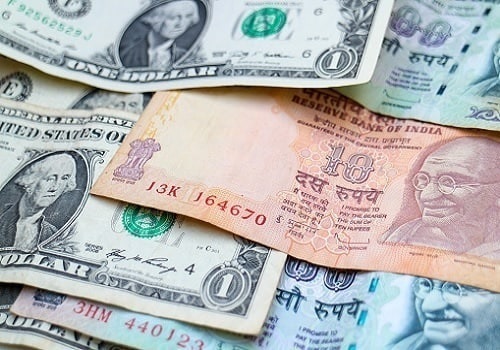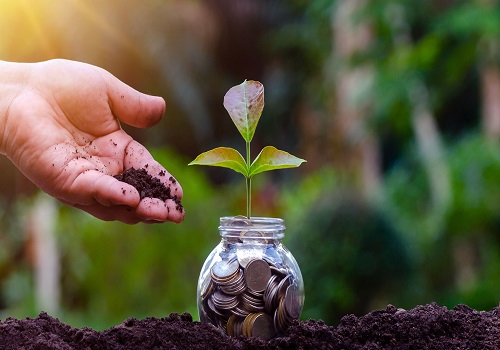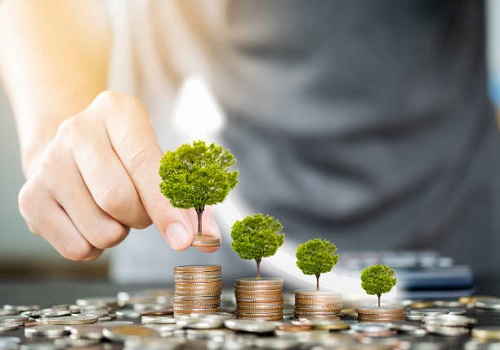India`s Renewables - On Track for Long Term Success! by HDFC Mutual Fund

Renewables now account for ~42% (up from 27% in FY15) of India’s total energy generation capacity! While Solar and Wind power capacities continue to be added on a large scale, India is also focussing on scaling other known forms of energy generation such as Nuclear energy and rooftop solar. India’s nuclear capacity is targeted to triple by 2032. Rooftop solar saw fresh commitments being made in the budget for 1cr families. Incentives to develop and adopt Green Hydrogen are also underway. These efforts add diversity to our energy generation capabilities, reduce import requirements, and benefit the environment, reducing risks for India. The capex involved bodes well for India’s growth in the longer term.
Currently, 42% of installed capacity for energy generation is via renewables– up from ~27% in FY15, and is targeted to move up to 50% by 2030.There have been multiple efforts by the government to scale up renewable energy generation. A dedicated Ministry of New and Renewable in the central government aims to aid development and deployment of new and renewable energy at scale. While the current capacity for non-fossil fuel based energy generation stands at 188GW as on 31 December 2023, the ministry intends to achieve a total of 500GW of installed capacity by 2030. Recently the ministry highlighted achievements on some of its programmes in 2023 such as adding
13.5GW renewable energy capacity in the year with an investment of Rs74,000 crores, its work around PM-KUSUM (solar power for farmers), PLI Scheme for High Efficiency Solar PV Modules, Solar Parks, Bioenergy, Wind Energy (including offshore wind energy), among others. Green Hydrogen is a major focus area with potential of being an exportable commodity, and has been covered in detail in our note dated 16 Jan 2023.
The increased scope and activities in this sector are reflected in the growing expenditure budgeted in the Interim Budget. It’s interesting to note that multiple projects will be funded through the Sovereign Green Fund. As a result, the actual spending could exceed the budgeted expenditure.
Rising Adoption of Solar Energy and the Development of an Ecosystem
As can be seen from the chart above, Solar has been one of the biggest components of additional energy capacities in India, rising from a share of ~1% in 2015 to ~17% as of 31-December 2023. With the improving adoption and plans being executed to increase usage, there has also been a focus on developing local manufacturing capacity for solar photovoltaic (PV) components domestically under the broader goal of ‘Atmanirbhar Bharat’.
After the first tranche of Solar Production Linked Incentive Scheme was rolled out in Nov-Dec 2021 with an approximated outlay of ?4,500 crore, the government announced a second tranche in September 2022 of ?19,500 crore for setting up Manufacturing Capacities for High Efficiency Solar PV Modules. Under this scheme, letters of Award have been granted for setting up 39,600 MW of fully / partially integrated solar PV module manufacturing units.
The interim budget reinforced the impetus on Solar, with the provision for rooftop solarisation. Under this project, one crore households will be enabled to obtain up to 300 units’ free electricity every month. The move could enable savings up to Rs 15,000-18,000 annually for households from free solar electricity and selling the surplus to the distribution companies. Additionally, this is positive for the entire value chain in India.
Nuclear Energy – Long Term Growth plan in place
While Nuclear today comprises a very small % of our overall energy mix, it could see gradual increase. Last year, the KAPP-3 was commissioned, which added 700 MW and took total current capacity to 7480 MW. Another 700MW at KAPP-4 has reached ‘criticality’ in Dec’23, which is the first step for commercial operation of the plant. KAPP-4 is the 2nd in the series of 16 indigenous Pressurised Heavy Water Reactors of 700 MW each being set up in the country. The Government has initiated steps to increase the nuclear power capacity from 7480 MW to 22480 MW by 2031-32.
A diverse energy mix with a high share of renewables is likely to improve India’s energy security. Lower dependence on Crude is also likely to aid the current account balance over the long term. India has come a long way on acting towards the ‘Net Zero’ goal for 2070, and has high renewable energy targets. Overall, efforts towards this sector are likely to enable higher and more sustainable growth by ensuring availability of clean energy to match the energy demand from India’s growing prowess in the manufacturing and other sectors.
Above views are of the author and not of the website kindly read disclaimer


















